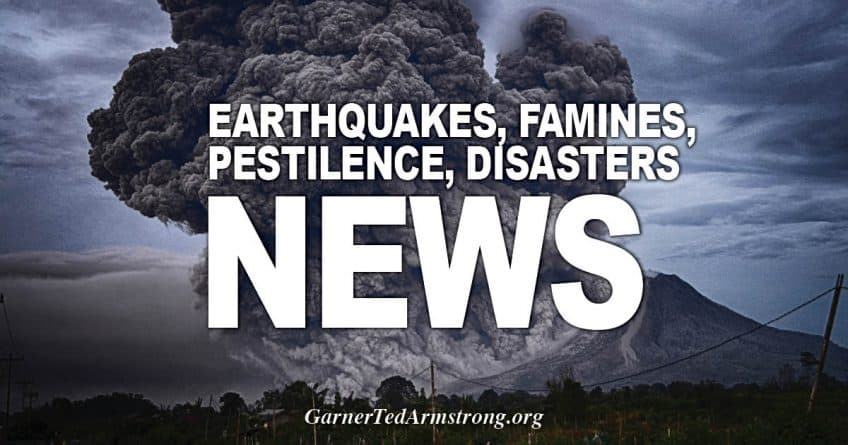–Heatwave across southern Europe sees temperatures reach 110F across Croatia, Romania, Spain and Italy
–Italian cities are on government health ministry’s maximum heat alert with concerns of more deaths to come
–Are you suffering in the heat? Share your pictures and stories with us – email david.burke@mailonline.co.uk
At least five people have died in the deadly heatwave engulfing southern Europe, it has been confirmed, with temperatures rising above 109F in several countries, including Italy, Spain and Croatia.
The deaths in Italy and Romania have been attributed to the extreme conditions in the past five days, and the heatwave has been christened ‘Lucifer’ in Italy.
In the Italian island Sardinia, the mercury hit a huge 110F this afternoon.
The latest victim was a woman whose car was swept away overnight by an avalanche of water and mud as humid conditions near the Alpine ski resort of Cortina d’Ampezzo broke into torrential rain.
That tragedy follows the deaths on Thursday of two pensioners, a 79-year-old woman and an 82-year-old man, who were caught up in wildfires in, respectively, the central region of Abruzzo and near Matera in the south of the country.
In Romania, two deaths were linked to the weather, including a farmworker who collapsed after working in fields in the heat at Mogosesti in the northeast of the country.
The heatwave has caused billions of euros worth of crop damage, with Italy hit heavily by wildfires.
Hospital admissions have spiked by 15 to 20 percent in Italy, and people who travel to the affected countries have been urged to show extreme caution.
In Italy, humidity and other factors are making it feel much hotter with the so-called ‘perceived’ temperature in Campania, the region around Naples, estimated at a broiling 131F yesterday.
In Rome, tourists have been risking recently-introduced fines for splashing in the Eternal City’s fountains to cool off.
But there has yet to be any sign of visitors to southern Europe’s summer hotspots being deterred by the rising trend in temperatures.
Tourists were queueing once more Saturday outside Florence’s Uffizi museum, which was forced to close Friday after its air conditioning broke down because of a lack of water from the dried up River Arno.
Health authorities in France have warned citizens to be particularly aware of the risks faced by the sick and the elderly.
Scientists meanwhile warned that deaths due to extreme weather in Europe could increase fifty-fold from an estimated 3,000 per year recently to 152,000 by the end of this century – if global warming is not reined in.
Southern Europe will suffer most and heatwaves would account for 99 percent of the deaths, according to research conducted for the European Commission and published in The Lancet Planetary Health.
The conclusions were questioned by Korean peers of the researchers who suggested humans would become less vulnerable to extreme weather with experience of it.
Meteo France forecaster Frederic Nathan said he was sure recent heatwaves reflected global warning.
‘We have always had them but their length and intensity has notched up since the 1950s and 60s and they are increasingly coming earlier or later.
‘If you look at records for France, the vast majority of new records being set are for high temperatures. Record cold is becoming increasingly rare.’
Scientist warned last week that large parts of South Asia, home to a fifth of the world’s population, could become unbearably hot by the end of this century.
Spain’s national weather service today issued an emergency warning for high temperatures in 31 of the country’s 50 provinces.
Weather warning website MeteoAlarm has issued warnings of ‘dangerous’ conditions in 11 countries in Europe, including – as well as Italy, Spain and Croatia – parts of Bosnia-Herzegovina, Switzerland, Hungary, Poland, Romania, Slovenia and Montenegro.
With peak temperatures topping 40 degrees Celsius in much of Italy, a total of 26 major towns and cities were on the health ministry’s maximum heat alert.
Today, Seville in Spain and some areas of the Italian island of Sardinia can expect temperatures around 109F, while Novska in Croatia is predicted an afternoon high of 104F.
The Italian city of Florence saw temperatures were exceeding 104F, however ‘perceived temperature’ – determined by temperature, humidity and wind and has been reported at more than 122F.
In Romania, ‘red alerts’ have been issued after meteorologists have forecast 108F in western parts of the country.
Earlier this week, Split airport in Croatia recorded 108F, not far from the country’s highest ever temperature of 109F in 1981.
High humidity in the north and hot winds from Africa in the south are making the perceived temperatures seem even hotter on beaches across the Mediterranean.
Met Office forecaster Emma Sharples said: ‘This extreme heat will have caught some holidaymakers out and they are advised to stay out of the midday sun abroad from 10am to 2pm.
‘They should stay hydrated and would be advised to stay close to the coast and swimming pools to cool down.’
Earlier this week a wildfire claimed the life of a 79-year-old woman, found dead in a field beside her home in Sant’Omero in the central region of Abruzzo of Italy, who had been overcome by flames that engulfed two hectares of surrounding farmland.
Holiday makers and locals alike have taken to Twitter to make lighthearted complaints about the high temperatures.
User @_ggina_ wrote ‘picked Corsica cus I wanted a bit of sun but didn’t realise that meant a 43 degree heatwave called lucifer, call me g the crisp in a week :)’
Another Twitter user, @EvitaGrazia, seemingly based in Austria, posted a picture of a paddling pool, captioned: ‘It’s soooooo hot, even the water in the pool was far too warm. #heatwave’
‘So, the one year I decide to go on holiday to Italy, its the one year they have a heatwave and it’s nice and cool in England,’ @asianspice__ wrote.
Another tourist, Mats Karlsson from Stockholm, said it’s ‘too hot to be outside’ in Brela, Croatia.
He added: ‘Got AC at 29 and it feels cold in comparison to the balcony.’
While temperatures are expected to stay high to the weekend, many of the worst affected areas can expect a drop in the next fortnight.
Florence, Italy will remain hot, but is predicted to be around 90-93F from Wendesday and onwards.
Seville, in Spain, will stay around 100-104F over the weekend, but will then rest steady at 36 for the following week, according to theweathernetwork.com
Zagreb, Croatia will see a drop in temperatures by Wednesday with the mercury dipping below 86F by Friday.
The spike in temperature has also caused wildfires in Italy, Spain and Croatia this week.
In Italy’s central region of Abruzzo, the fires has claimed the life of at least one person and forced the closure of a major highway.
A 79-year-old woman was found dead in a field next to her home in Sant’Omero, Abruzzo, having apparently been overcome by flames that engulfed two hectares of surrounding farmland.
A section of the Via Aurelia coastal motorway that runs northwards from Rome to the Riviera had to be closed for several hours because of a major fire near Grosseto in Tuscany.
The region’s celebrated landscape is usually baked to a rich golden colour by the end of the summer: this year it resembles burnt toast with August barely underway.
HEAT FORCES EARLY WINE HARVEST
Italy’s annual wine harvest, the biggest in the world, is off to its earliest start in a decade as the country swelters in a heatwave following months of drought.
Winemakers have also had to contend with spring frosts and hailstorms this year and the country’s agri-food agency Coldiretti is anticipating a 10-15 per cent fall in volumes.
But producers say a good year for drinkers is still on the cards at the start of a harvest that will not be completed until around the end of October.
Traditionally, the start of the Italian harvest is celebrated in the north of the country, where the first chardonnay grapes were picked Friday at the Faccoli family winery in the Franciacorta region near Milan.
But the acclaimed sparkling wine area was beaten to the punch this year with picking already underway in Sicily and at least one producer in neighbouring Piedmont having started bringing in his early-ripening grapes on July 29.
Across the country, harvest start dates were expected to be, on average, around ten days earlier than usual.
But the pattern is uneven and the impact of the current broiling conditions on Italy’s top wines remains to be seen.
Olive yields in parts of the country are forecast to be 50 per cent lower than normal this autumn and the scarcity of water has cut sheep’s milk production by 30 pe rcent in others, with knock-on effects for the production of one of Italy’s most popular cheeses; pecorino.
The heatwave has come on the back of a prolonged drought that is set to cost Italy’s large agricultural sector billions with 11 regions facing critical water shortages.
In Romania, authorities told people not to go outside during the heatwave, and urged adults not to leave children in cars due in the scorching weather.
Meteorologists issued a ‘red code’ heat alert for 12 counties in western Romania, with 108F forecast for the next two days, with soaring temperatures expected to subside only after sunset.
An ‘amber code’ was issued for the rest of the country, forecasting temperatures up to 102F.
Police said there will be restrictions for heavy traffic on major roads during the weekend due to the heatwave.
In Greece local authorities yesterday issued an evacuation order for residents near a seaside town south of Athens as a wildfire threatens homes in high winds.
About 100 people were initially affected by the order for homes near Kalyvia, some 25 miles) south of Athens, officials from the local mayor’s office said.
Winds up to 37 mph were hampering the firefighting effort, while temperatures in the area reached 95F.
Meanwhile, Albanian authorities have asked for assistance from the European Union to fight some 20 wildfires in the Vlora district along the country’s Riviera.
In southwestern Albania, wildfires were threatening the Llogara National Park as the firefighters were unable to extinguish the blaze in the region’s steep mountains.
In Corsica, a forest fire has been raging for three days, leading to French authorities ferrying firefighters and trucks from the mainland to help.
The regional authority for southern Corsica warned Friday that the fire has spread north and it could take several days to extinguish the blaze on the Mediterranean island.
Some 70 new firefighters and 15 vehicles were sent Friday from the mainland, but the regional authority said rough terrain and exceptionally hot, dry weather is complicating efforts.
The fire broke out Wednesday in the Palneca forest, forced evacuations on a celebrated hiking route and threatened nearby towns at the height of vacation season. No one has been hurt.
Source: http://www.dailymail.co.uk/news/article-4763544/At-five-dead-heatwave-christened-Lucifer.html
[Disclaimer]







